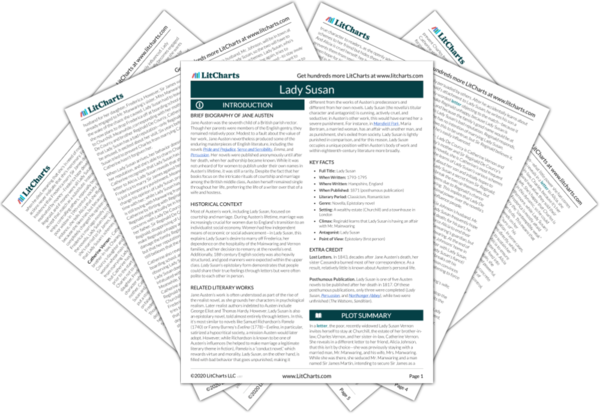Gender, Power, and Manipulation
Lady Susan’s titular character, Lady Susan Vernon—an aging but attractive widow—is clever and cruel. She decides to visit her brother-in-law, Charles, and his wife, Catherine, because she’s been kicked out of her previous residence: she was staying with a married man, Mr. Manwaring, and his wife and family. After seducing Mr. Manwaring and his friend, Sir James Martin (who was engaged to Mr. Manwaring’s sister, Miss Manwaring) Lady Susan…
read analysis of Gender, Power, and ManipulationPublic Appearance vs. Private Reality
Lady Susan is an epistolary novel, meaning that—apart from its conclusion—the story is told entirely through letters. Characters often reveal their true feelings and intentions to their recipient; for instance, readers are aware of Lady Susan’s lies and schemes due to the cruel letters she sends to her friend Alicia, and readers understand Catherine Vernon’s hatred of Lady Susan because of Catherine’s letters to her mother. However, characters hide these feelings…
read analysis of Public Appearance vs. Private RealityLove and Transaction
The characters in Lady Susan experience and act on various kinds of love, both romantic and familial. Characters’ relationships with one another are what drive the story, which centers around Lady Susan’s potential engagement to Reginald De Courcy and her schemes involving her daughter, Frederica. But in each significant relationship—between lovers, parents and children, or siblings—at least one character always hopes to gain something. By presenting several different relationships between people who should…
read analysis of Love and Transaction







